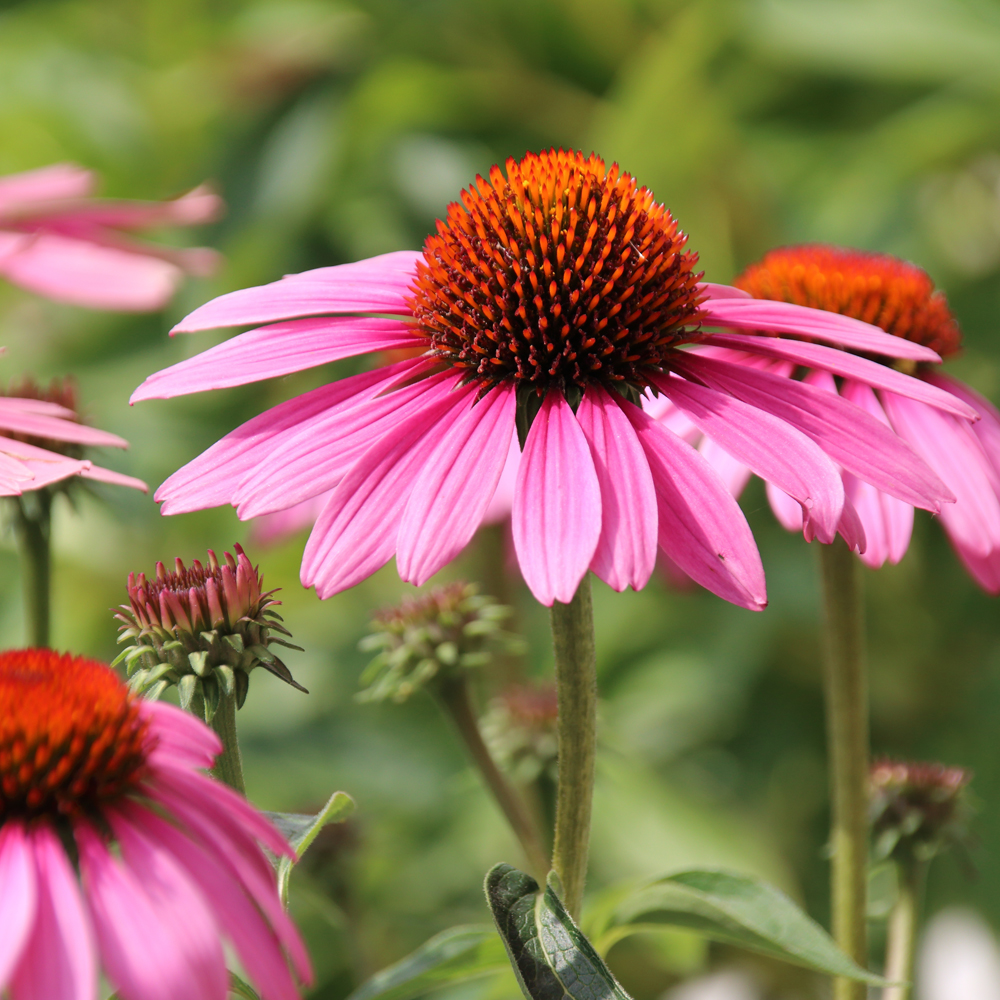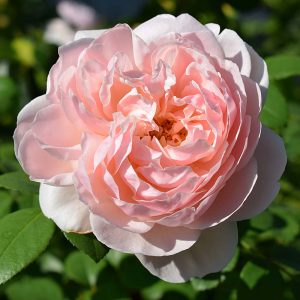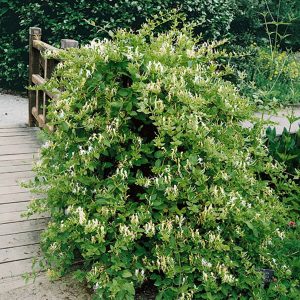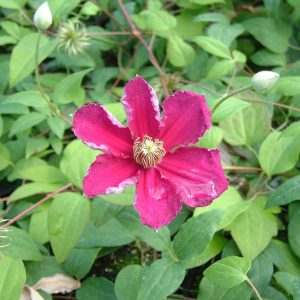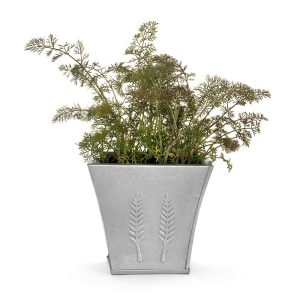Description
Echinacea purpurea, commonly known as purple coneflower, is a hardy and attractive perennial that makes a great addition to any UK garden. With its stunning pink, purple, or white flowers that bloom from mid-summer to early autumn, it is a popular choice for attracting bees and other pollinators to the garden. To complement the beauty of Echinacea purpurea, consider planting it alongside some companion plants that will complement its colours and textures. For example, the soft blue blooms of Perovskia atriplicifolia (Russian sage) make a great contrast to the bold colours of the coneflower. The dark foliage of Heuchera (coral bells) is also a great complement to Echinacea purpurea’s bright flowers. Ornamental grasses, such as Pennisetum alopecuroides (fountain grass), can also make a great companion, providing a contrasting texture and movement in the breeze. Echinacea purpurea is a low-maintenance plant that prefers full sun and well-draining soil. It can be planted in borders, mixed plantings, or even in containers. In addition to its ornamental value, Echinacea purpurea is also widely used in herbal remedies and supplements, thanks to its immune-boosting and anti-inflammatory properties. Overall, Echinacea purpurea is a great choice for adding colour and interest to any UK garden. By planting it alongside some well-chosen companion plants, you can create a beautiful and harmonious planting scheme that will be a joy to behold throughout the growing season.
Key Facts
- Common Name(s):Purple Coneflower ‘Magnus’
- Hardiness:Fully hardy through most of the UK
- How big will I get? Echinacea purpurea ‘Magnus’ can grow to a height of 1m and a spread of 0.5m.
- Did You Know That:The name Echinacea comes from the Greek word for hedgehog, due to the spikes that form on the seed head.
Plant Calendar
A rough guide to how this plant will change through the year.
| Jan | Feb | Mar | Apr | May | June | July | Aug | Sept | Oct | Nov | Dec | |
| Flowering Time |  |
 |
 |
 |
||||||||
| Foliage Colour |  |
 |
 |
 |
 |
 |
 |
 |
 |
| J | F | M | A | M | J | J | A | S | O | N | D |
 |
 |
 |
 |
||||||||
 |
 |
 |
 |
 |
 |
 |
 |
 |
Care Guide

Soil Requirements
Echinacea purpurea ‘Magnus’ prefers soil with good drainage and does not tolerate standing water. This plant can grow in soil with a wide range of pH levels, it is not picky about the pH level of the soil.

Best Position
Echinacea purpurea ‘Magnus’ can handle either an exposed or a sheltered position and requires full sun to thrive, this consists of more than six hours of direct sunshine per day.

Maintenance
Echinacea purpurea ‘Magnus’ should be deadheaded regularly to promote new flowers coming through. This will prolong the flowering period of the plant as it saves the energy that the plant would have put into producing seeds and allows it to produce more flowers!

Pest, Diseases and Wildlife
Echinacea purpurea ‘Magnus’ is generally pest free, and it tends not to have problems with diseases. It is also known to attract bees, butterflies and other pollinators. It is not considered to be toxic.
